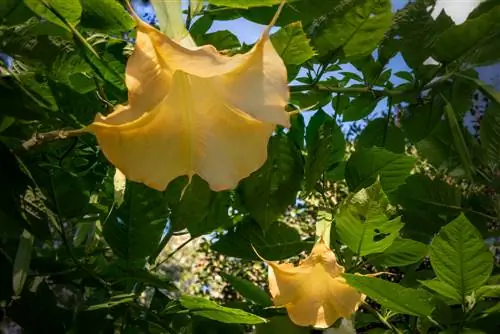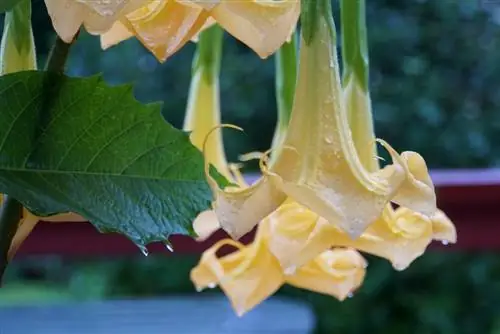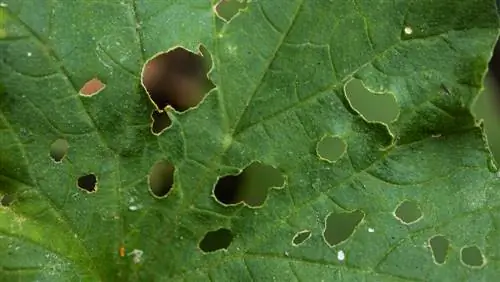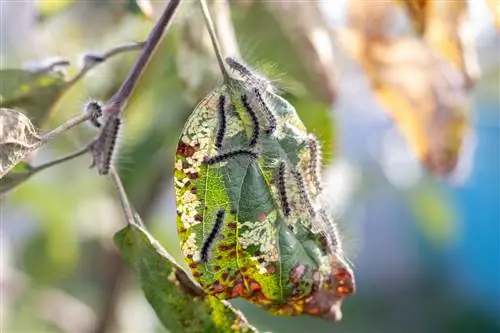- Author admin [email protected].
- Public 2023-12-16 16:46.
- Last modified 2025-06-01 06:02.
Is your angel trumpet getting more and more holes in its leaves? There can be different reasons. If you get to the bottom of the matter and take appropriate measures, you can save your beautiful ornamental plant from something worse.
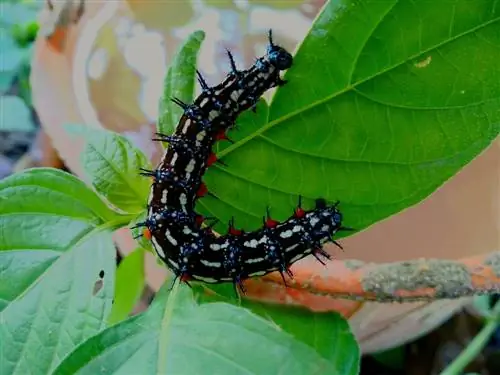
What causes holes in the leaves of an angel trumpet?
Holes in the leaves of an angel trumpet are usually caused by pests such as leaf bugs, caterpillars, earwigs or snails. Manual removal, neem oil, soapy water or alternative habitats for the pests can be offered to combat them.
Holy leaves - what can be behind them
If an angel's trumpet shows holes in the leaves, it's an unpleasant thing, but usually not a really threatening problem. As a rule, there are pests behind it that can be successfully combated with the right measures. However, you should do that too, because in the long term the infestation will of course affect the plant and can also lead to a lack of flowering.
The most common parasites that like to feast on the large, delicate leaves of the angel trumpet and leave hole-shaped feeding marks are:
- Sheet bugs
- Caterpillars
- Earworms
- Snails
Detection and control
Sheet bugs
Leaf bugs leave medium-sized holes in angel trumpet leaves. You should first combat them “humanely” and without chemicals by removing them manually in several stages. Shake the angel's trumpet in the morning when the hard-to-see bugs are still stiff and collect them from the ground. Repeat this until the food marks diminish. Otherwise, you can also spray the plant with neem oil, which is harmless to bedbugs and angel's trumpet, or, more aggressively, with soapy water.
Caterpillars
If caterpillars are at work, you can tell by very large and rapidly spreading holes - after all, caterpillars are insatiable. You should therefore take countermeasures immediately - ideally simply by searching the plant thoroughly and collecting the caterpillars. This is usually sufficient and is always preferable to chemical treatment.
Earworms
Earwigs are actually more beneficial than pests, as in addition to a few bites of tender angel trumpet leaves, they also enjoy mites or aphids. So it's better to make friends with them and offer them an alternative instead of the angel's trumpet: clay flower pots filled with wood wool that are placed upside down in the bed or hung in a tree have proven successful. The earwigs usually move there immediately and on their own.
Snails
You can clearly recognize snail damage by large holes with snail slime. Snail infestation is quite critical for the angel's trumpet. Either hunt the snails in the evening hours and place the plant in a clay pot on a dry terrace.


